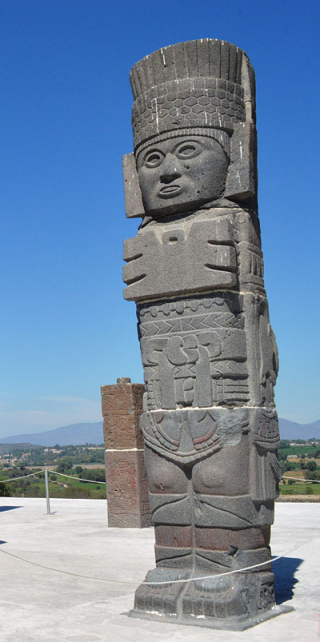Special edition
LATAM – International Course on Stone Conservation: Observation, Documentation and Diagnosis
Organizers
- Coordinación Nacional de Conservación del Patrimonio Cultural (CNCPC-INAH), Mexico
- ICCROM
Venues
- Archaeological site of Tula (Mexico)
- Coordinación Nacional de Conservación del Patrimonio Cultural (Mexico City)
Background and course objectives
Under the LATAM-ICCROM programme for the conservation of cultural heritage in Latin America and the Caribbean, a series of activities have been proposed for the conservation of stone-based heritage.
In 2013, a survey was conducted in order to understand the wide variety of interests and concerns related with stone conservation within the region.
In November 2013, a first seminar on stone conservation was organized in Mexico City, with the participation of conservation professionals from Argentina, Brazil, Chile, Colombia, Italy and Mexico. This seminar identified a number of activities responding to current needs for stone conservation in the region. The two most important areas discussed were the urgent need for seminars, allowing discussion and exchange between professionals involved in this field, and the development of training activities dealing with various aspects of stone conservation.
To address the lack of opportunities for professional exchange, a symposium on “Documentation, Diagnosis and Conservation of Wall Painting, Stucco, Stone and Rock Art” was held from 25 to 28 November 2014 at the CNCPC. This symposium provided a broad overview of conservation projects, with the valuable participation of an international group of conservation professionals.
A second seminar was also organized, focusing on “Documentation and Diagnosis of Stone”. This seminar took place both in Mexico City and at the archaeological site of Tula, with two main goals: to discuss and implement a methodology for the diagnosis of stone and, to evaluate the ICOMOS-ISCS Illustrated Glossary on Stone Deterioration Patterns and its application to the specific case of Tula. This seminar was attended by conservation professionals from Argentina, Chile, Colombia, Cuba, Ecuador, El Salvador, Mexico and Peru. It proved the value of exchange of information between professionals dealing with stone conservation.
The current aim of the programme is to prepare a series of training activities, which will progressively focus on various aspects of stone conservation. A first course has been planned for 2015, pending approval of the budget, with the following objectives:
- to provide methodological tools for observation, documentation and diagnosis of cultural heritage in stone;
- to standardize the use of basic concepts, in order to reduce discrepancies in terminology by: critically and accurately defining basic concepts such as diagnosis, documentation, observation and condition assessment; selecting terms of stone decay from the Illustrated ICOMOS-ISCS Glossary which may be applicable to the case study of Tula;
- to promote networks of stone conservation professionals within the LATAM region.
The course is designed for conservation professionals involved in the conservation of stone heritage (both movable and immovable, and archaeological or architectural) in Latin America and the Caribbean and will include both theoretical and practical sessions in order to foster improvement in conservation practice. Participants will engage in group activities as well as individual exercises to discuss approaches and tools for the diagnosis and conservation assessment of complex sites.
The course will be divided in three main modules:
Unit 1. Observation
Unit 2. Documentation
Unit 3. Diagnosis
Participants will also have an active role, with the presentation of case studies from their own countries, as well as contributions in various discussions, exercises and presentations throughout the course.
Participants
The course is open to a maximum of 12 heritage professionals from Latin America and the Caribbean, with at least 3 years of experience in stone conservation, including conservators, archaeologists, scientists, engineers and other related disciplines. Preference will be given to professionals working in public institutions and those with the ability to disseminate and apply knowledge acquired during the course.
Course Team
The course team will consist of conservation professionals from Argentina, Mexico, Italy and Spain.
Language
The course will be mainly conducted in Spanish. Some sessions will be in English, so English comprehension will be required.
Fee
There is no fee for the course.
Scholarships for local travel, accommodation and living expenses
All accepted participants may apply for partial scholarships. Applicants are therefore advised to seek financial support from sources such as governmental institutions, employers and funding agencies.
The partial scholarships will cover the cost of ground transportation between Mexico City and Tula, lodging in the city of Tula, as well as breakfast and lunch during the three weeks of the course. The cost of transport from participants’ home towns to Mexico City, as well as dinners must be covered by participants.
Application form
Fill out the application and send it along with the following documents (in Spanish) by email to the addresses indicated below. If digital delivery is not possible, send the documents by post.
– Full Curriculum vitae
– Brief report (approximately 1000 words) covering the following questions:
- Describe the organization you work for and the role it plays in your country on the issue of stone conservation. What kind of stone heritage does it cover (archaeological, historical, movable or immovable)?
- What has been your greatest achievement in stone conservation? Describe what you have done and why this is important to you.
– Describe a conservation project in which you have been involved, focusing on terms of observation, documentation and diagnosis (500-700 words). Include in one section the context of the site and of the project (location, type of heritage, site values) and in the other description of objectives, scope, achievements and challenges of the project.

